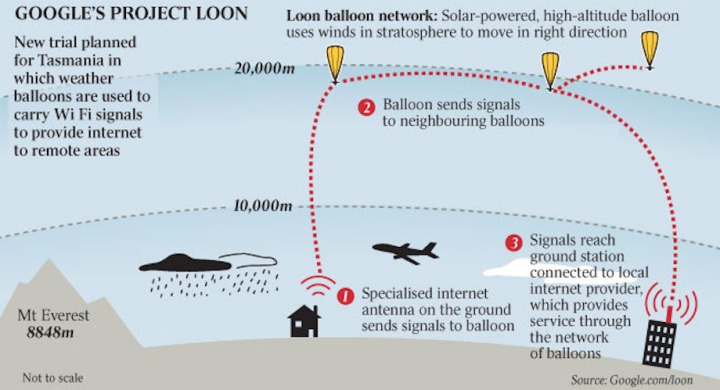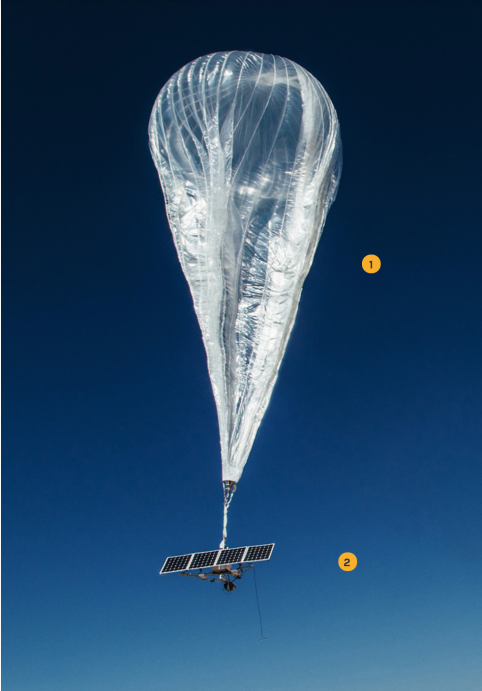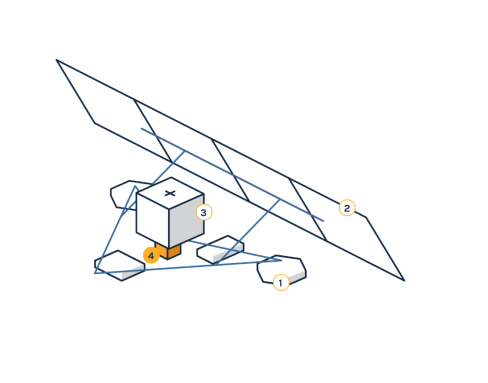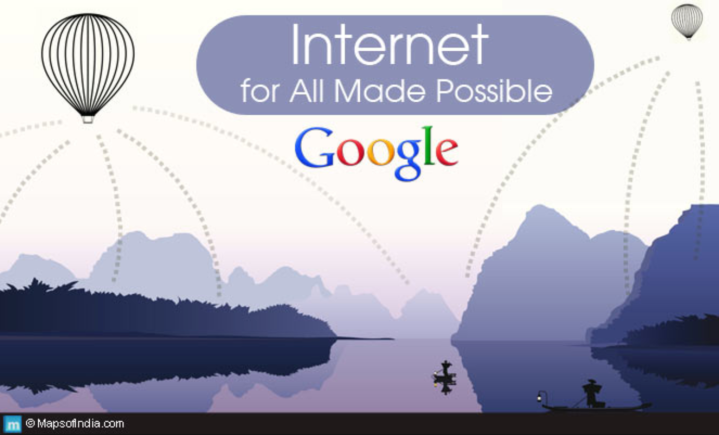WHAT IS LOON?
Loon LLC is an Alphabet Inc. subsidiary working on providing Internet access to rural and remote areas. The company uses high-altitude balloons placed in the stratosphere at an altitude of about 18 km (11 mi) to create an aerial wireless network with up to 4G-LTE speeds. It was named Project Loon, since even Google itself found the idea of providing Internet access to the remaining 5 billion population unprecedented and “loony”.
The balloons are maneuvered by adjusting their altitude in the stratosphere to float to a wind layer after identifying the wind layer with the desired speed and direction using wind data from the National Oceanic and Atmospheric Administration (NOAA). Users of the service connect to the balloon network using a special Internet antenna attached to their building. The signal travels through the balloon network from balloon to balloon, then to a ground-based station connected to an Internet service provider (ISP), then onto the global Internet. The system aims to bring Internet access to remote and rural areas poorly served by existing provisions, and to improve communication during natural disasters to affected regions. Key people involved in the project include Rich DeVaul, chief technical architect, who is also an expert on wearable technology; Mike Cassidy, a project leader; and Cyrus Behroozi, a networking and telecommunication lead.
The balloons use patch antennas – which are directional antennas – to transmit signals to ground stations or LTE users. Some smartphones with Google SIM cards can use Google Internet services. The whole infrastructure is based on LTE; the eNodeB component (the equivalent of the “base station” that talks directly to handsets) is carried in the balloon.

THE IDEA BEHIND IT
Billions of people around the world are still without internet access. Loon is a network of balloons traveling on the edge of space, delivering connectivity to people in unserved and underserved communities around the world.
Loon partners with mobile network operators globally to expand the reach of their LTE service. Together, we help expand coverage to places that lack it, supplement existing networks, and provide expedient coverage after natural disasters.
Delivering connectivity from balloons flying 20 km up in the stratosphere poses a unique set of engineering challenges. To expand connectivity to unserved and underserved areas around the world, Loon combines advancements in materials science, atmospheric modeling, machine learning, communications systems, and more.
THE LOON SYSTEM
Loon has taken the most essential components of a cell tower and redesigned them to be light and durable enough to be carried by a balloon 20 km up, on the edge of space. Loon balloons are designed and manufactured to endure the harsh conditions in the stratosphere, where winds can blow over 100 km/hr, and temperatures can drop as low as -90° C.

- BALLOON
Made from sheets of polyethylene, each tennis court-sized balloon is built to last for well over 100 days before landing back on Earth in a controlled descent.
- FLIGHT EQUIPMENT
All the flight equipment is highly energy-efficient and is powered by renewable energy. Solar panels power the system during the day while charging an onboard battery to allow for nighttime operations.

- Antennas
Antennas transmit connectivity from ground stations, across a balloon mesh network, and back down to a user’s LTE phone. A user needs nothing more than a standard LTE phone to connect to a Loon balloon.
- Solar Panels
Solar Panels power the equipment during the day and charge an onboard battery to allow for nighttime operation.
- Flight Capsule
The flight capsule holds the electronics that command and control the Loon system.
- Parachute
A parachute automatically deploys to guide the balloon safely back to Earth after its flight.
- LAUNCHING LOON
The custom-built Autolaunchers are designed to launch Loon balloons safely and reliably at scale. Side panels protect the balloon from the wind as it is filled with lift gas and positioned for launch. The crane points downwind to smoothly release the Loon balloon up into the stratosphere. Each crane is capable of launching a new balloon into the Loon network every 30 minutes.
6 THINGS YOU SHOULD PROBABLY KNOW ABOUT GOOGLE’S PROJECT LOON IN INDIA…

- 20 kilometre up in the sky
Google’s Project Loon balloons float 20-kilometre above the Earth’s surface, in the stratosphere. Each balloon can provide internet to an area of 40 kilometers. These balloons remain powered throughout the day by generating energy from solar panels and wind.
- Aimed at rural areas
Project Loon is aimed at increasing internet penetration in rural as well as remote areas; Google, however, will be only be a technology provider not the internet service provider.
- Partnership in India
In order to provide internet access via Project Loon, Google has partnered with state-run telecom operator BSNL to share its telecom spectrum. It will use the 2.6GHz band to test beaming internet from the sky.
- 4G Speeds
Google claims each balloon can provide connectivity to a ground area of about 40km in diameter using 4G tech. To use LTE, google has partnered with telecom companies to share spectrum to enable people to access internet directly from their phones.
- India in not the first country
New Zealand was the first country to get internet powered by Project Loon, while Brazil was the second. Sri Lanka also gave the nod to Google recently and is expected to get 100% internet connectivity “in a few months” courtesy Project Loon. Indonesia is the fourth country to get Project Loon-based internet, while India will be the fifth.
- Drones may be in the offing
While the Department of Electronics & Information Technology (DeitY) gave the nod for Project Loon, it rejected Google’s plans to provide internet via eight big solar-powered drones. If the company gets the requisite clearances, we may soon have drones in the sky beaming down internet as well.
REFERENCES

